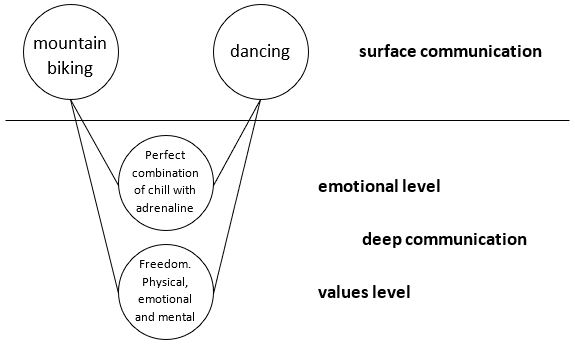When I started my International Relations studies, I thought – finally, I will be getting my grades according to my knowledge and not based on teachers/professors sympathy.
How much I was wrong. And I paid the price.
Well. Ok, the price was tiny. I did my studies very well with multiple scientific scholarships. Nevertheless, I noticed that colleagues who know how to talk with professors were getting on average half grade better.
This observation pushed me to further my studies. Economic, financial analysis, as well as psychology, sociology, pedagogy, and negotiations, appeared in the scope of my interests. After reading those times’ bestseller, Daniel Goleman’s Emotional Intelligence, I realized one of human life’s essential truths.
No matter what you sell and what is your expertise.
What matter is if you know how to sell it. And communication is the key to it. It is everywhere. You sell your work to your boss, your products to your clients, your personality to a potential lover, upbringing to your children.
I am 43 and still think that communication makes you successful in your career and your life happy. According to John Gottman and his research, good communication improves your relationship with your partner. And happy relationship translates to happy life according to the study of Robert Waldinger from Harvard University. The cause-effect here is undeniable. Better communication skills, bring more money, recognition, power and happiness.
I enjoyed my studies, but there was one annoying thing for me. It was happening to me every single day. At least a few times per day.
“That’s cool. BUT HOW can I use it in practice?”
How? How? How?
I remember reading in Irresistible Attraction of dr. Kevin Hogan. I found there a sentence, which sounded like this:
“It is important to create rapport based on values.”
Ok. BUT HOW? HOW?!!
Welcome to the series – DSR® Communication – How to…
Today’s topic from DSR® Communication – how to connect.
My research confirms a suggestion from dr. Kevin Hogan.
The most robust connection, or at least feeling of it, at least in your interlocutor’s subjective perception, is when you create rapport based on shared values.
As you can see from the excerpt from my book “DSR®: Mastering Communication”, based on Robert Dilts model of (neuro)logical level, the depth of communication looks like this:


Picture 1. Levels of Rapport
All of these depth levels of communications are useful. Different areas are helpful in different situations. But for creating the most robust possible rapport with your talking partner are values. Or anything which belongs to “deep communication”.
This is the right moment for you to quote my question which haunted me during my studying times.
But how? How is a practical way to create rapport on deep (emotional or values) level?
Good that you asked – below you will find an answer to this question.
Let’s imagine the situation.
Example of the method “common emotions” and “common values”:
You (person A) are in the office. You are talking with your work colleague (person B).
And we all know how important for a smooth work are positive relationships in place of work. You want to improve it.
A: So, how was your holiday?
B: Thank you. Good. (don’t expect too exhausting answers at the beginning)
A: Oh, common. Tell me more. What have you experienced? What was interesting to you?
B: Well. The area was nice. Lot’s of nature. Forests. Hills. Lakes. Perfect place to ride your mountain bike or sail a little. (memory starts working)
A: And how did you feel doing this?
B: Ohhh (and memory starts working even better) That was amazing. The perfect combination of chill with adrenaline when you do some mountain biking in such a spectacular area.
A: So, you do mountain biking. Why? What’s so important about it for you?
B: Freedom. Physical, emotional, mental.
A: That’s nice. I have never experienced it with mountain biking. But I know the perfect combination of chill with adrenaline. It is when I dance. I love Latino. You have steps and figures, but you improvise with them according to changing music. Whenever I do this, I feel the perfect combination of chill with adrenaline. And dancing – it gives me freedom. Physical, emotional and mental.
Let’s unfold the example.


Picture 2. Visual representation of a sample talk with methods: “common emotions” and “common values.”
Person A – is a dancer and more party-oriented.
Person B – as a hobby do mountain biking in nature.
Person A – lead the conversation. Has a goal to create a rapport with person B on emotional and values levels.
To ask elicitating questions – the ones which extract emotions and values – we need a topic. In this case, the last holidays of person B.
Question about emotions: And how did you feel doing this?
Example of alternative questions: How does it make you feel? What do you feel?
Question about values: What is so vital for you in it?
Example of alternative questions: What do you love about it? What do you value most in it?
Remember. A question creates a frame for an answer. Change the question, and you will change the answer. Change these questions too much, and you will not hear about emotions or values – but something else.
Sometimes your interlocutor will be talkative. You will not have to ask about your last holiday or hobby. You will not have to ask about emotions or values. The person will, on its own, talk about this. Listen to them carefully, and then say something about yourself with their feelings and values.
The methods “common emotions” and “common values” are not really about questions, but more about telling about your life experiences the way, including your interlocutor’s emotions and values.
The clue of this method is the last paragraph of an example. Questions are there to help you.
Connecting with another person through communication can be done in different ways. I have explained two of five different methods described in my book “DSR®: Mastering Communication”.
I find them the most important ones. When you master to communicate with other people that you are on emotional and values level similar to them, you will connect easily with them even with differences on a surface level. You will win their hearts and minds.
I hope my explanation with an example is sufficient for you to understand how to connect with another person through communication. Sadly to master it, one has to practice. So don’t procrastinate and start today. Write a few messages. To the people whom you know. Or whom you just learned. Practice as much as possible – with time you will get better at connecting to other people.
If you have any questions or problems with these methods (and not only these methods), write to me or leave a comment.
Subscribe to our newsletter. Follow us on social media. And stay tuned for more useful articles in the field of communication.
Thank you for your time and enjoy improvements in your communication — the way you want.
Maciej Czekaj
DSR® Institute




